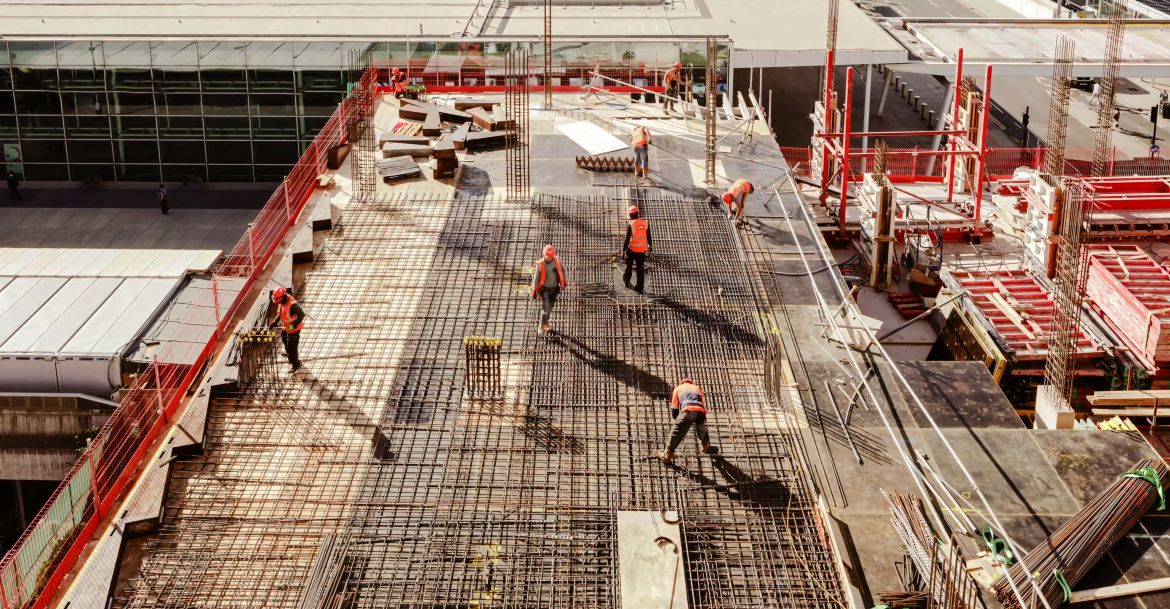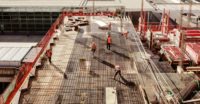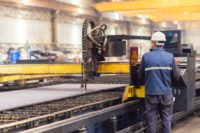Construction has often been slow to adopt new technologies, especially compared to other heavy industries like manufacturing. However, that trend is starting to change, with recent innovations providing benefits too significant to overlook. One of the most intriguing of these is smart concrete.
Concrete is the second most consumed material in the world, falling only behind water. Despite this popularity, it carries several substantial caveats, including its high carbon footprint and propensity for cracking. Newer, smarter versions pose a potential solution, giving the world’s most popular building material important safety and convenience advantages and possibly disrupting the construction industry.
What is smart concrete?
In many contexts, the “smart” prefix refers to giving technologies some form of wireless connectivity. That’s not necessarily the case with smart concrete, which covers a much broader range of materials than it may initially seem.
Smart concrete is any cement mixture that gives the material new properties. This “smartness” typically comes through four main ways: creating different material compositions, implementing special processing, integrating new functional components or modifying its microscopic structure.
Self-healing, self-sensing and thermally conductive concrete are some of the most popular examples. These materials have yet to see widespread implementation, but they each hold significant promise. More options will emerge as technology advances and become more accessible. As that happens, this next generation of concrete could disrupt the construction sector for good.
Benefits of smart concrete in construction
Smart concrete, in all its forms, has several advantages over traditional materials. Here are five of the most significant benefits for commercial and residential construction projects.
Increased strength and resiliency
All concrete is strong, which is part of its popularity, but smart concrete can often withstand even more. Interestingly, this strength is often a convenient side effect of other changes instead of the primary goal of new materials. Just as pumped concrete can withstand more force than poured concrete because it contains less water, adding new components to these mixtures often boosts its strength.
Many smart mixtures, including self-sensing and conductive concrete, contain materials like carbon fiber or graphite. These more rigid elements act as internal rebar, providing more structure once the concrete solidifies. As a result, buildings made of these materials are more resistant to shocks like earthquakes and high winds.
Plain concrete has relatively low shear strength compared to its compressive strength, so these forces can endanger occupants. The presence of rigid carbon fiber and graphite counteract that weakness without needing additional rebar, which is sometimes prone to corrosion. Consequently, this increased strength has considerable safety advantages.
Other mixtures provide added resiliency against the elements, such as water. One popular type is crystalline waterproof concrete, which offers hydrophobic qualities, repelling water to keep occupants dry or prevent damage to water-sensitive components like rebar.
Damage detection and reporting
Another advantage of smart concrete is that many types can act as sensors. Carbon fiber, steel shavings or similar materials can let it conduct electricity. Engineers can use this conductivity to inspect structures for damage by running an electrical current through the concrete.
When conductive concrete in a building warps, cracks or suffers other damage, its electrical resistance will change. These changes will appear on noninvasive tests, enabling faster responses to prevent further issues. Because these tests don’t require drilling, teams can monitor and address damage without affecting the strength of the concrete, improving safety all around.
Recent innovations take this damage detection a step further. One solution embeds wireless sensors in the concrete that sends updates on its condition via a smartphone app. Once the mixture reaches its full strength or starts degrading, it will alert relevant authorities. Workers can then repair the structure before it causes a major disruption.
Fast responses are essential to damage mitigation. While prevention is always better than a cure, some degradation is inevitable with time and use. Smart concrete’s real-time damage reporting lets teams fix it as soon as possible to avoid more dangerous and harder-to-repair issues.
Self-repairing
Some smart concrete can even repair itself from minor cracks and imperfections, protecting building occupants without interference. All concrete contains some self-healing properties, thanks to its materials remixing and hardening through ongoing hydration. Smart solutions add extra materials for more dramatic self-repairing.
There are many ways to make self-healing concrete, but one of the most popular is to use shape memory polymers (SMPs). SMPs change their shape in response to stimuli like stress or temperature shifts. Concrete with these materials in the mixture can automatically fill cracks or fix warping as soon as these imperfections arise and trigger the SMP.
Self-repairing concrete is particularly helpful for public infrastructure like highways. Authorities don’t have to close them off to address the issue if these structures can heal themselves. Preventing these disruptions can improve traffic, minimize transportation emissions and make travel more convenient without sacrificing the safety of everybody on the road.
Heating properties
Smart concrete has advantages beyond maintenance, too. Conductive concrete can heat up through an electrical current or in response to natural elements like sunlight. These heating properties can boost buildings’ sustainability and improve road safety.
More than 70% of the nation’s roads are in snowy areas, and 24% of weather-related crashes stem from affected pavement. However, salting, plowing and otherwise de-icing roads is a slow process. Conductive concrete offers a solution. Roads made of this material can heat themselves to melt snow and ice, providing a safer driving surface in less time.
Response teams that don’t have to salt or plow some roads can clear more of the area in a fraction of the time it would otherwise take them. Everyone can experience the same safety improvements, regardless of where they live.
Construction teams can also use this concrete to boost their eco-friendliness. Building homes or businesses with self-heating floors offers a more energy-efficient solution to conventional warming systems. Concrete radiates heat well, and it only takes a small amount of energy to produce significant temperature differences.
Enabling smart cities
New concrete mixtures can also help enable the smart city movement. Urban areas need a vast network of Internet of Things (IoT) sensors for adaptive traffic systems and self-driving car navigation to work. Conductive concrete can turn roads themselves into these sensors.
Smart roads can detect traffic patterns based on the weight of the vehicles that populate them. This infrastructure could send this information to other systems like connected stoplights or navigation apps to reduce congestion and improve transportation efficiency. IoT systems that work more efficiently can ensure roads, parking lots and sidewalks are safer by preventing accidents and improving response times.
Similar connectivity in the concrete throughout a city could offer real-time updates about when buildings or roads need maintenance. The municipality can then adapt to these changes to prevent accidents while avoiding mass disruption and complicated schedules.
Smart concrete is a revolutionary innovation
Smart concrete is still in its early phases, but its potential keeps growing. This technology could reshape the construction industry entirely as it becomes more accessible. Buildings and public infrastructure would become safer, more efficient and convenient for everyone that relies on or works with them.
New kinds of smart concrete will emerge as research into this field continues. Its possibilities will only expand, paving the way for a new era in construction.








